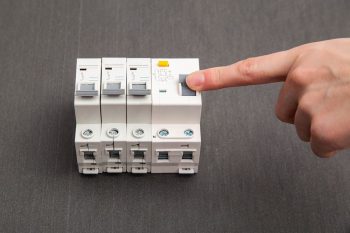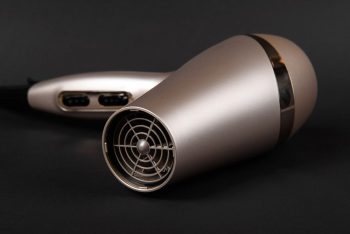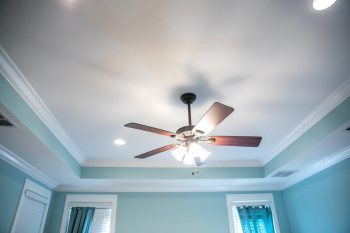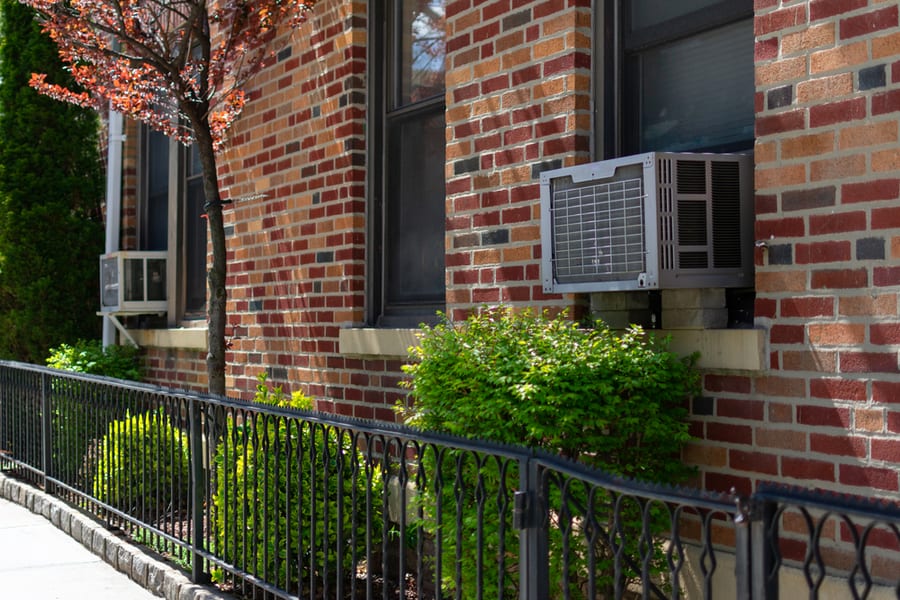
Are you looking for ways to redirect airflow from window AC? If the answer is yes, then this post is for you.
An air conditioner can help you beat the summer heat. But there are other ways to use your window AC unit to cool down your home during those hot summer days.
Window air conditioners are extremely popular and valuable, saving time and money. However, most homeowners don’t realize there are different ways to redirect airflow from window AC. Here are some:
- Use a box fan.
- Position furniture away from windows and doors.
- Install down-draft shelving and a set of blocking panels in front of the window.
- Add a ventilation damper.
- Use blinds, curtains, and shades to cover your windows.
It is possible to redirect air from window AC units. There are several options for redirecting airflow from window AC; you can choose the one that suits you best.
It would be best if you had airflow in whatever room you are in or going to be in. That means learning how to redirect air from the window is extremely important.
This article will give eight ways to redirect air from a window AC unit.
How To Redirect Airflow From Window AC
Are you having problems with your home AC? Maybe it’s not cooling the room as efficiently as it should be, or your house is always hotter than your neighbors.
If this sounds like you, you’ll want to read go through the following ways to redirect airflow from window AC:
1. Wire Hanging
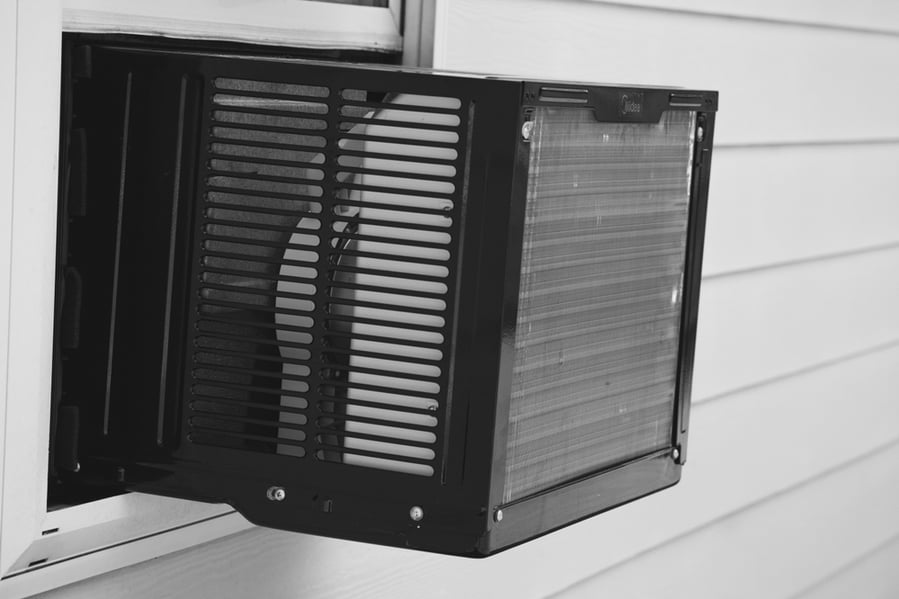
With the AC running, you can use a wire hanger to suspend the AC filter from the window frame.
The hanger should be long enough to reach from inside your house to outside, and it is best to attach it to a frame section that is not directly under the unit.
The best way to do it is to hang the wire so that it is perpendicular to your window AC unit.
You may want to put some weight on the bottom of the wire so that it hangs straight down from your AC unit, and this will help keep it from swaying back and forth when you’re not using it.
The wire hanging kit comes with a metal rod and hooks that you can attach to the ceiling and pull down or up, depending on where you want to redirect the airflow.
You’ll need to drill holes in your ceiling for this method, but once it’s done, you can move the metal rods up or down and point them directly at the window unit.
This option will allow you to install an air conditioning unit in any room with access to the outside ventilation system. Make sure you have enough space around your window so the cord will not be in contact with any other object.
It’s important to consider the weight of the AC unit. For example, if you’re hanging an AC unit on the wall and it weighs 100 pounds, you don’t want to have to hold it up when someone walks by.
2. Duct Tape Around the Window
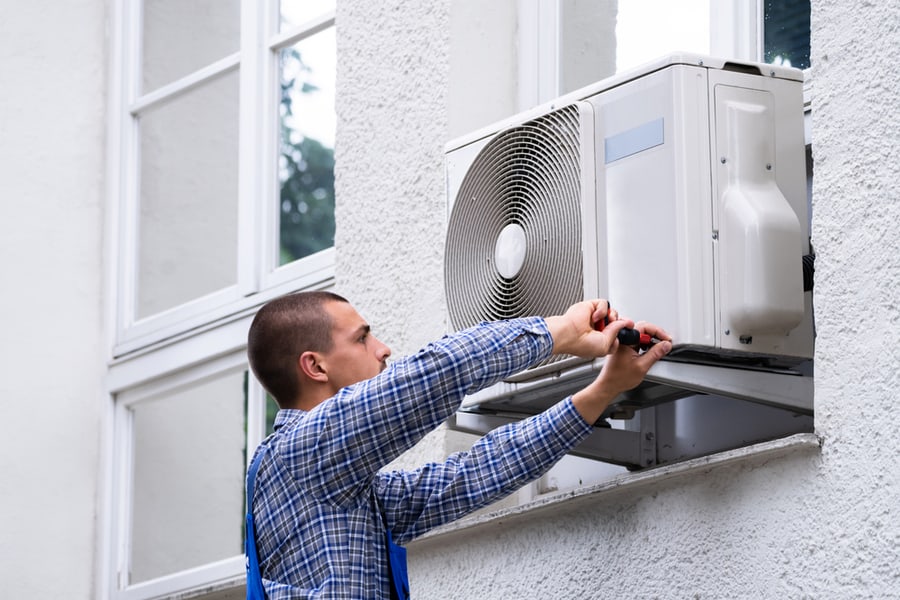
You can use duct tape to redirect airflow from your window AC unit. Duct tape is inexpensive and comes in various colors, and you can find it at any hardware store or home improvement store.
Wrap the duct tape around the entire frame of the window AC unit. This way, you will have a seal that seals all the seams between the frame and the outer plastic casing.
Cut off any excess duct tape so that there is a gap between each seam. You should also ensure that no loose ends are sticking out of your AC unit’s top or bottom, which could cause later problems.
Slide some cardboard under your window AC unit so it sits flat on the floor during installation, and ensure that it’s sitting straight up and down before you leave it there permanently.
This way, your AC won’t get any air from outside. The duct tape should be tight enough that when you close your window again, the AC won’t get any airflow through the opening.
3. Cover Windows With Curtains

This will help keep the air moving in your home, but you need to ensure that the curtains are long enough to cover the entire length of your window.
If they’re too short, they won’t be able to block all of the air coming in through your windows.
Covering the windows with curtains will prevent any airflow from being created by your AC unit.
It will also create a buffer zone between your living space and the AC unit so that it doesn’t blow directly on you or anything else in your living area.
Curtains are available in many different styles and colors, so it’s easy to find something that fits your decor.
You can also choose curtains with a pattern or fabric that will help keep the room cool on sunny days.
If you have a sliding window, use a plastic sheet and tape it to the side of the frame. This will keep drafts from coming in through the window and reduce the effectiveness of your AC unit.
4. Glass Head Screw Holder
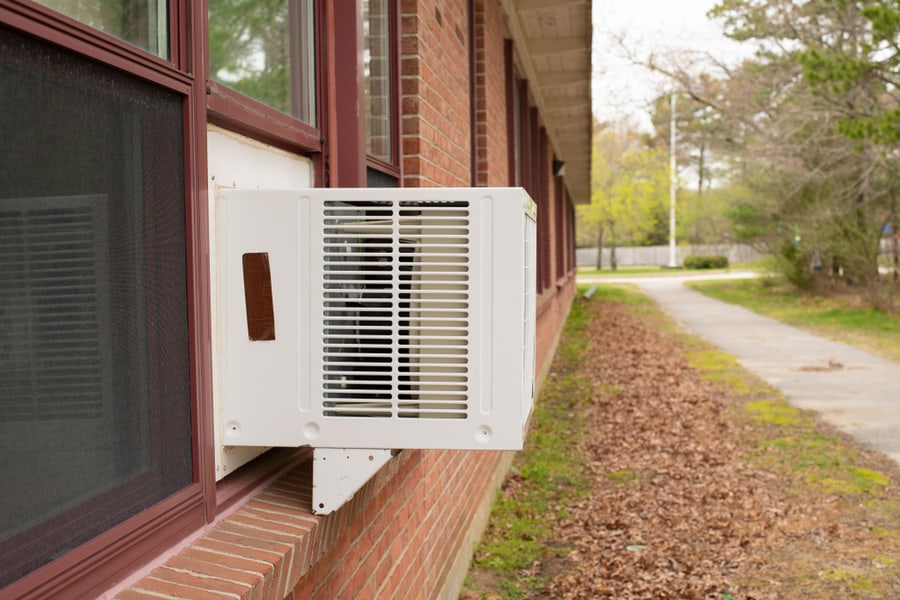
A glass screw holder is a window air conditioner that uses a glass tube to absorb heat and release it through the fan. It can be used for all rooms, including the living room, bedroom, and kitchen.
The glass screw holder has two functions: one is to absorb heat from the sun or infrared rays: and the other is to release heat inside the house when there is no power supply.
Glass screw holders have been around for years. They have become quite popular among homeowners who want to enjoy the benefits of window air conditioners without worrying about their installation or maintenance.
These holders are available in various sizes and can be adjusted to fit most air conditioners. However, you will need to choose one that is compatible with the size of your window.
Glass head screw holders come in several styles, including ones that can be attached directly to the frame and others that require some assembly before installation.
5. Install a Ceiling Fan
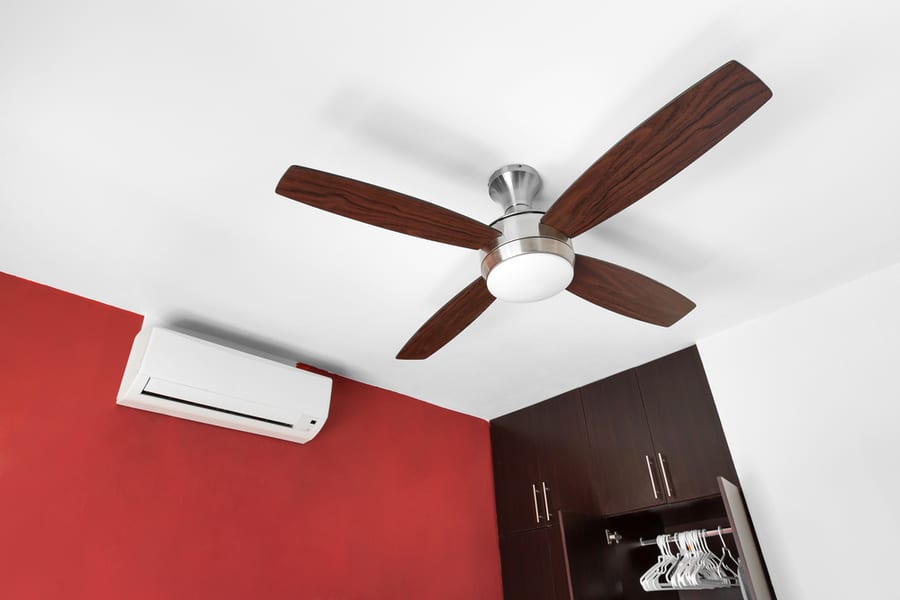
You can install a ceiling fan directly above the unit if you want to redirect airflow from your window air conditioner. This is a cheap and easy way to eliminate the condensation that builds up in your home’s AC system.
Remove the window AC unit from its location on your wall. Then, place a ceiling fan directly above it and secure it with three screws into each side of the unit.
Now, connect an extension cord to the fan and run it through an outlet near where you’ll be using it. An extension cord will allow you to move your ceiling fan around if needed without finding another outlet nearby.
Cool air from the ceiling fan will replace the air that blows out of your window AC. As a result, you’ll eliminate the hot air from the vents on top of your unit and replace it with cooler air from below.
This will lower your AC’s cooling effect and keep your home at an ideal and comfortable temperature all day.
6. Add Vents on the Ceiling
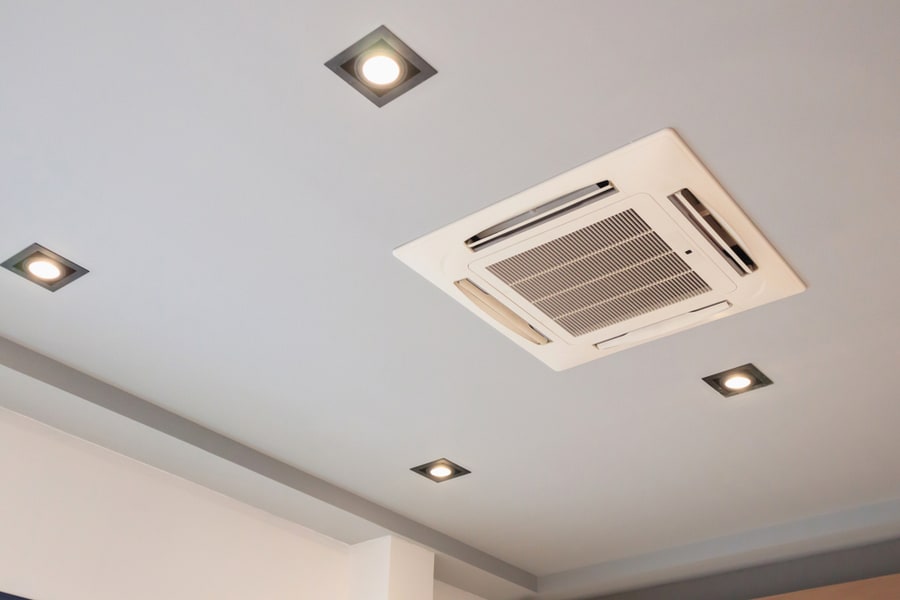
The best way to redirect airflow is to add vents on the ceiling, increasing the air that can be directed into the room.
The vents should be at least 6 inches wide to have enough space for air to flow through them. Use a template or template-like device to mark where you want to place your vents.
Make sure that they are placed at least 12 inches above eye level and that there is a minimum of 4 feet between each vent.
Partially open the vent and then close it again so that air flows out of the room. Then, open it further so that air flows out of the room.
When you’ve got the right amount of flow, close it again. Repeat this process until you have no more airflow from the vent.
7. Put Up a Mirror To Redirect Airflow

Window air conditioners move air through a vent tube. The problem is that the vents are usually in the same place as the windows, which means they get blocked by furniture or other objects against them.
Mirrors can redirect airflow from the window AC so that it flows through more of your house. They are also less intrusive than other options like fans, which you might want to use if you have a small window AC unit.
You can do this on the side of your window or even in front of it. This is because the air from the AC will be redirected by the glass and reflected into your room, which should provide some relief from the heat.
8. Add Insulation to Your Attic or Roof

The most common way to redirect airflow from your window AC is to add insulation to the attic or roof of your home.
In addition to keeping your home warmer in the winter and cooler in the summer, this will also help reduce air conditioning costs by limiting the amount of air entering and leaving your house.
Insulation is available in many forms, including spray foam, rigid foam, mineral wool, and cellulose.
Spray foam is the most common type of insulation used for attics, but it’s also the most expensive option. Rigid foam panels are less expensive than spray foam but don’t provide as much insulation per inch of thickness.
Mineral wool is another option that provides good thermal performance but has a higher cost per foot than spray foam or rigid foam panels.
Cellulose insulation made from the recycled newspaper is another option that’s very inexpensive compared to other types of insulation.
Conclusion
There are inexpensive ways to redirect airflow from window-mounted air conditioning units, which many homeowners will benefit from.
These tips should maximize your energy savings while keeping you comfortable in the room you want to be in.
Ultimately, there are several ways to redirect airflow from an air conditioner unit. The best way to redirect airflow from your window AC is by adding vents to the ceiling, installing a ceiling fan, and using curtains, as seen in this article.
Frequently Asked Questions
How Do I Redirect Airflow From AC?
The easiest way to redirect airflow from an AC is to use the vents on the side and top of the unit. However, you can also use these same vents to redirect air from an exhaust system.
Insert a thin piece of cardboard into the vent opening and seal off any gaps with duct tape. This will help direct airflow away from your window AC unit.
How Can I Make My Window Air Conditioner Circulate Better?
You can make your window air conditioner circulate better by opening the intake vents at the top of the unit.
Doing this will allow more air to enter your AC unit, improving its efficiency and allowing it to cool your room faster.
You should also use a clean filter to get the most out of your window AC unit.





